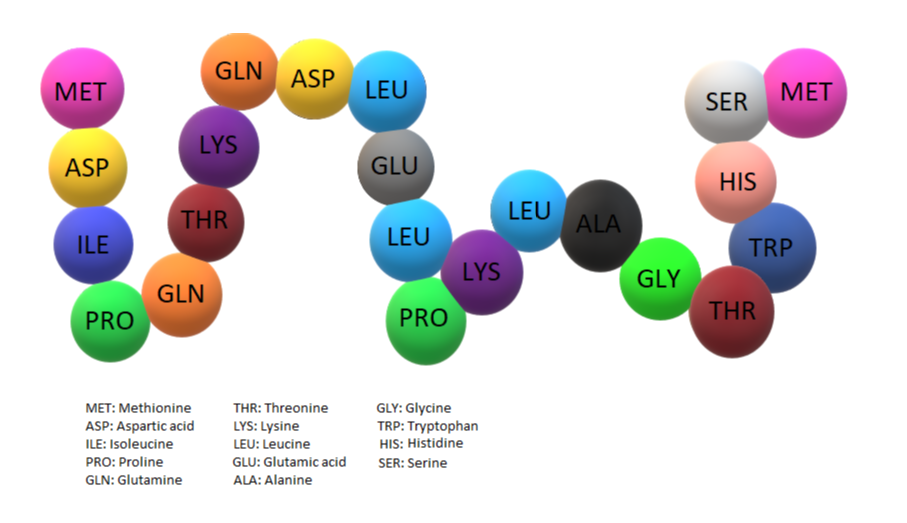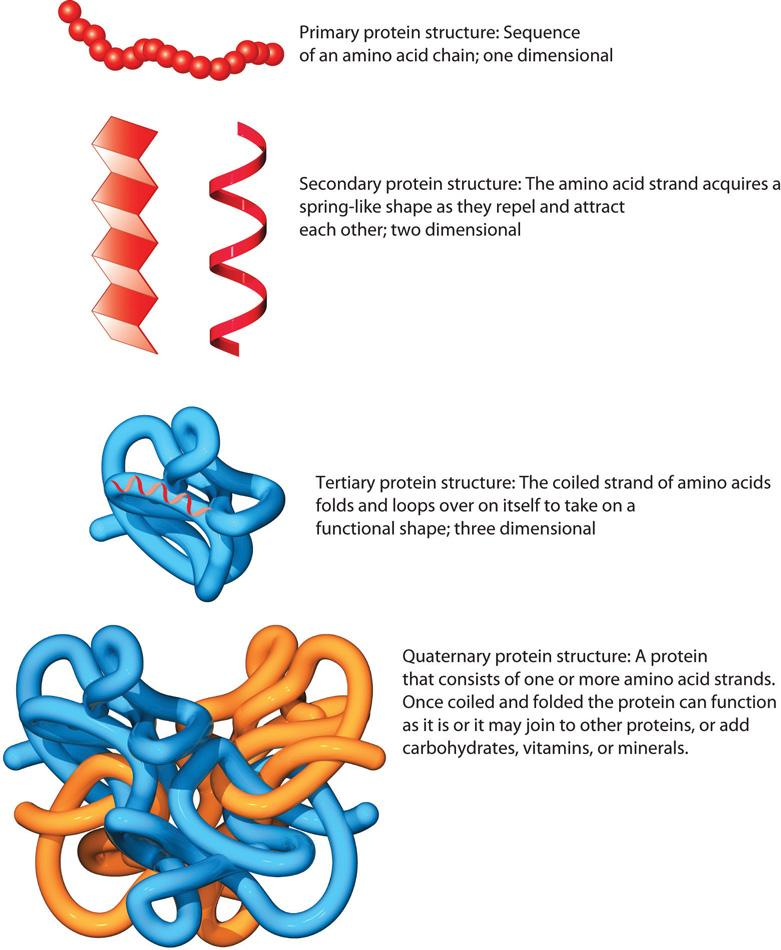
What is a repeating unit of protein?
Answer
490.8k+ views
Hint: Proteins are large molecules having high molecular weight. These molecules are of high importance in many fields. Within the organisms, proteins perform a vast variety of functions. Some of these include performing DNA replication, acting as catalysts during biological reactions.
Complete answer:
Proteins are known as polymers, that is they are molecules of greater molecular weight composed of repeating units of smaller structural and functional units. These repeating units present in a protein molecule are known as amino acids. It is also known as the monomers in a protein polymer. These are organic compounds that contain an amino group, that is –NH2 and a carboxylic acid group –COOH, along with an R side chain group, which can be either an H atom or an alkane chain of any length. The nature of the amino acid depends on the composition of the R group. The major atoms that constitute amino acids are C, H, O, S and N. There exist about 500 naturally occurring amino acids.

Figure: An amino acid chain making up a peptide or a protein molecule
These chains of amino acids make up a peptide chain and multiple peptide chains aligned together in various conformations make up a protein molecule.

Figure: The different structures of a protein molecule.
Note:
A protein molecule has different structures. That is, primary, secondary, tertiary and quaternary. The primary structure includes the arrangement of amino acids one after the other connected by peptide bonds. The secondary structure involves the further folding of the primary structure; there are two types of secondary structures, known as the alpha helix and the beta pleated structures. The tertiary structure involves further forming a loop and forming a three dimensional structure. Quaternary structure involves looping of further more amino acid strands.
Complete answer:
Proteins are known as polymers, that is they are molecules of greater molecular weight composed of repeating units of smaller structural and functional units. These repeating units present in a protein molecule are known as amino acids. It is also known as the monomers in a protein polymer. These are organic compounds that contain an amino group, that is –NH2 and a carboxylic acid group –COOH, along with an R side chain group, which can be either an H atom or an alkane chain of any length. The nature of the amino acid depends on the composition of the R group. The major atoms that constitute amino acids are C, H, O, S and N. There exist about 500 naturally occurring amino acids.

Figure: An amino acid chain making up a peptide or a protein molecule
These chains of amino acids make up a peptide chain and multiple peptide chains aligned together in various conformations make up a protein molecule.

Figure: The different structures of a protein molecule.
Note:
A protein molecule has different structures. That is, primary, secondary, tertiary and quaternary. The primary structure includes the arrangement of amino acids one after the other connected by peptide bonds. The secondary structure involves the further folding of the primary structure; there are two types of secondary structures, known as the alpha helix and the beta pleated structures. The tertiary structure involves further forming a loop and forming a three dimensional structure. Quaternary structure involves looping of further more amino acid strands.
Recently Updated Pages
Why are manures considered better than fertilizers class 11 biology CBSE

Find the coordinates of the midpoint of the line segment class 11 maths CBSE

Distinguish between static friction limiting friction class 11 physics CBSE

The Chairman of the constituent Assembly was A Jawaharlal class 11 social science CBSE

The first National Commission on Labour NCL submitted class 11 social science CBSE

Number of all subshell of n + l 7 is A 4 B 5 C 6 D class 11 chemistry CBSE

Trending doubts
Differentiate between an exothermic and an endothermic class 11 chemistry CBSE

10 examples of friction in our daily life

One Metric ton is equal to kg A 10000 B 1000 C 100 class 11 physics CBSE

Difference Between Prokaryotic Cells and Eukaryotic Cells

1 Quintal is equal to a 110 kg b 10 kg c 100kg d 1000 class 11 physics CBSE

State the laws of reflection of light




